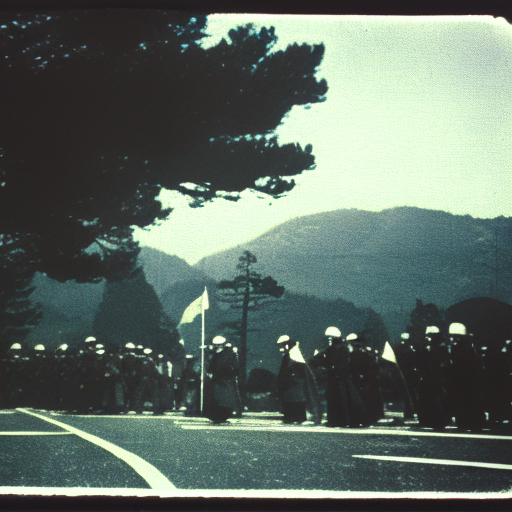Battle of Yashima: A Decisive Naval Conflict in Japanese History
The Battle of Yashima, which took place in 1185, was a pivotal event in Japanese history. It was a naval battle fought between the Taira clan and the Minamoto clan during the Genpei War. The battle occurred near the Yashima peninsula in the Seto Inland Sea, and it played a crucial role in determining the outcome of the war.
Background:
The Genpei War was a civil war between two powerful clans, the Taira and the Minamoto, for control over Japan. The Taira clan had dominated the imperial court and held significant political influence, while the Minamoto clan sought to overthrow them and establish their own power. The war lasted for several years and involved numerous battles on land and at sea.
Preparation and Strategy:
The Minamoto clan, led by Minamoto no Yoshitsune, had been planning a naval assault on the Taira clan for some time. They knew that the Taira clan had a strong navy and controlled the seas, so they devised a strategy to counter their advantage. Yoshitsune ordered his men to construct a fleet of small, maneuverable boats that could navigate the shallow waters around Yashima. These boats were equipped with archers and samurai warriors.
The Battle:
When the Minamoto fleet arrived at Yashima, they faced a formidable Taira force. The Taira clan had a larger fleet, consisting of larger, more heavily armed ships. However, the Minamoto boats were able to outmaneuver the Taira ships in the shallow waters, giving them a significant advantage. The Minamoto archers rained arrows down on the Taira ships, causing chaos and confusion among their ranks.
As the battle raged on, the Minamoto forces managed to board and capture several Taira ships. The Taira clan, caught off guard by the Minamoto strategy, struggled to mount an effective defense. The Minamoto warriors fought with great skill and determination, gradually gaining the upper hand.
Outcome:
The Battle of Yashima ended in a decisive victory for the Minamoto clan. The Taira forces were overwhelmed and forced to retreat. The battle marked a turning point in the Genpei War, as it weakened the Taira clan and bolstered the Minamoto clan’s position. It also demonstrated the effectiveness of the Minamoto strategy and their ability to adapt to the Taira clan’s naval superiority.
Significance:
The Battle of Yashima had significant implications for Japanese history. It paved the way for the final battle of the Genpei War, the Battle of Dan-no-ura, which ultimately led to the downfall of the Taira clan and the rise of the Minamoto clan. The victory at Yashima solidified the Minamoto clan’s control over the seas and set the stage for their ultimate triumph.
The battle also highlighted the importance of naval power in Japanese warfare. It demonstrated the effectiveness of small, maneuverable boats in countering larger, more heavily armed ships. This lesson would be remembered and applied in future conflicts throughout Japanese history.
In conclusion, the Battle of Yashima was a pivotal event in Japanese history. It was a naval battle fought between the Taira and Minamoto clans during the Genpei War. The Minamoto clan’s victory at Yashima weakened the Taira clan and set the stage for their ultimate defeat. The battle also demonstrated the importance of naval power and the effectiveness of small, maneuverable boats.












